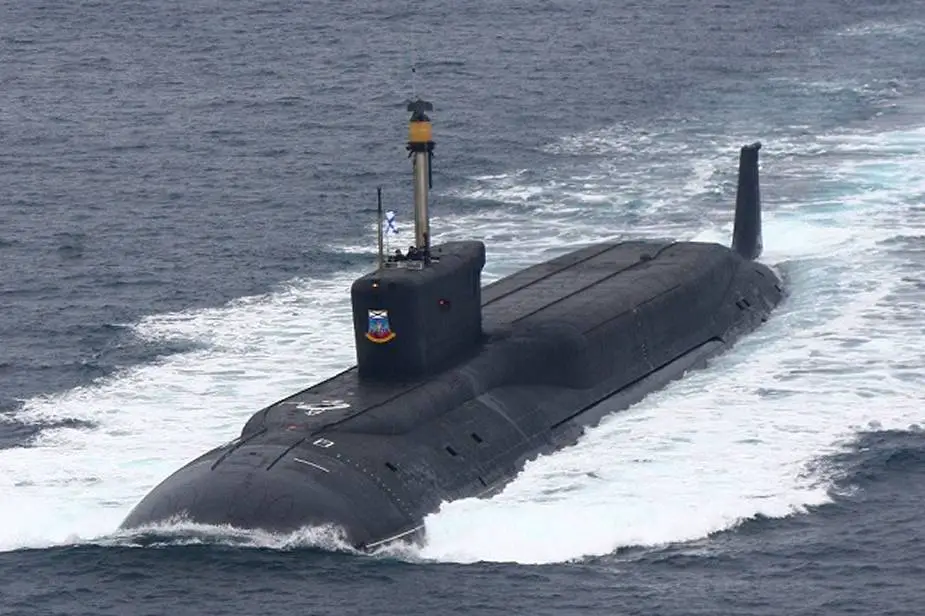Breaking news
Russian submarines commissioned as scheduled.
According to TASS, the Russian submarine fleet has entered a new development stage. The submarines are commissioned as scheduled. New types of arms and warships are designed, Navy Commander-in-Chief Admiral Nikolai Yevmenov told the Krasnaya Zvezda daily on the eve of the Submariner Day marked on March 19.
Follow Navy Recognition on Google News at this link

K-535 Yuriy Dolgorukiy, the first Project 955 Borey-class SSBN (Picture source: Russian MoD)
“The Navy receives new and perfect nuclear and non-nuclear submarines of the fourth generation. Submarines of the fifth generation are designed and built. The Russian Navy receives Borey-A-class SSBN and Yasen-class SSGN built by Sevmash Shipyard,” Yevmenov said adding the submarines have outstanding arms and technical means.
Sevmash is preparing the Generalissimo Suvorov SSBN of project 955A and the Krasnoyarsk SSGN of project 885M for trials. They will sail out as the navigation opens.
“Along with the approved project of fourth-generation nuclear submarines, work is ongoing to create fifth-generation strategic and multirole nuclear submarines,” Yevmenov said. The Military Scientific Center is in charge of the scientific part of the design and construction.
Shipyards that build submarines have entered a new development stage, accelerated the construction of nuclear and non-nuclear submarines. Underwater arms are also developed, the commander-in-chief said.
Non-nuclear submarines
The non-nuclear submarine fleet is built according to the schedule and sometimes ahead of it. The Admiralty Shipyard is building diesel-electric subs of project 636.3 with precision weapons for the Pacific fleet. It will receive six non-nuclear submarines of the project by 2024, Yevmenov said. Previously, the Black Sea fleet received such submarines, which are less noisy.
The diesel-electric submarines launched cruise missiles at an exercise of strategic deterrence forces on February 19. A submerged project 636.3 sub fired a Kalibr missile. The footage showed the sub to rapidly submerge and launch the Kalibr that hit the target.
Project 636.3 is the third generation of diesel-electric submarines. They are 74-meters long and have a maximum displacement of 3900 tons. The sub can submerge 240 meters deep and the maximum depth is 300 meters. The cruising range is 7500 miles. Kalibr missiles are the main weapon.
SSBN, SSGN
Borey-class SSBN submarines have to replace Akula subs of project 941 (operational since 1981) and Dolphin subs of project 667BDRM (1984). Sevmash in Arkhangelsk region builds the submarines.
Five SSBNs of project 955/955A are operated by the Navy. They are the Yuri Dolgoruky, the Alexander Nevsky, the Vladimir Monomakh, the Knyaz Vladimir, and the Knyaz Oleg. Another five Borey-A-class SSBN are under construction — the Generalissimo Suvorov, the Imperator Alexander III, the Knyaz Pozharsky, the Dmitry Donskoy, and the Knyaz Potemkin.
The project was designed by the Rubin bureau in St. Petersburg. Project 955A has a modernized hull, new electronics, and better stealth features against the initial project 955.
Yasen-class SSGN was designed in the early 1990s by the Malakhit bureau in St. Petersburg. The sub destroys U-boats and warships, naval bases and ports, groups of warships, etc. The SSGN has a light hull only in the bow. The sub is divided into eight compartments — command, torpedo, residential, electromechanical, missile, reactor, turbine and auxiliary mechanisms.
Kalibr-PL and Onyx missiles are the main weapons. The SSGN can be armed with Tsirkon hypersonic missile in the future.
For the first time, the torpedo launchers were moved from the bow to the second compartment and located at the sides at an angle to the diameter plane. The design created optimal conditions for the operation of the sphere big-diameter bow antenna of the sonar. Sevmash is currently building six SSGNs. The Kazan lead submarine of project 995M joined the Russian Navy on May 7, 2021.
© Copyright 2021 TASS Navy Recognition. All rights reserved. This material may not be published, broadcast, rewritten or redistributed.


























